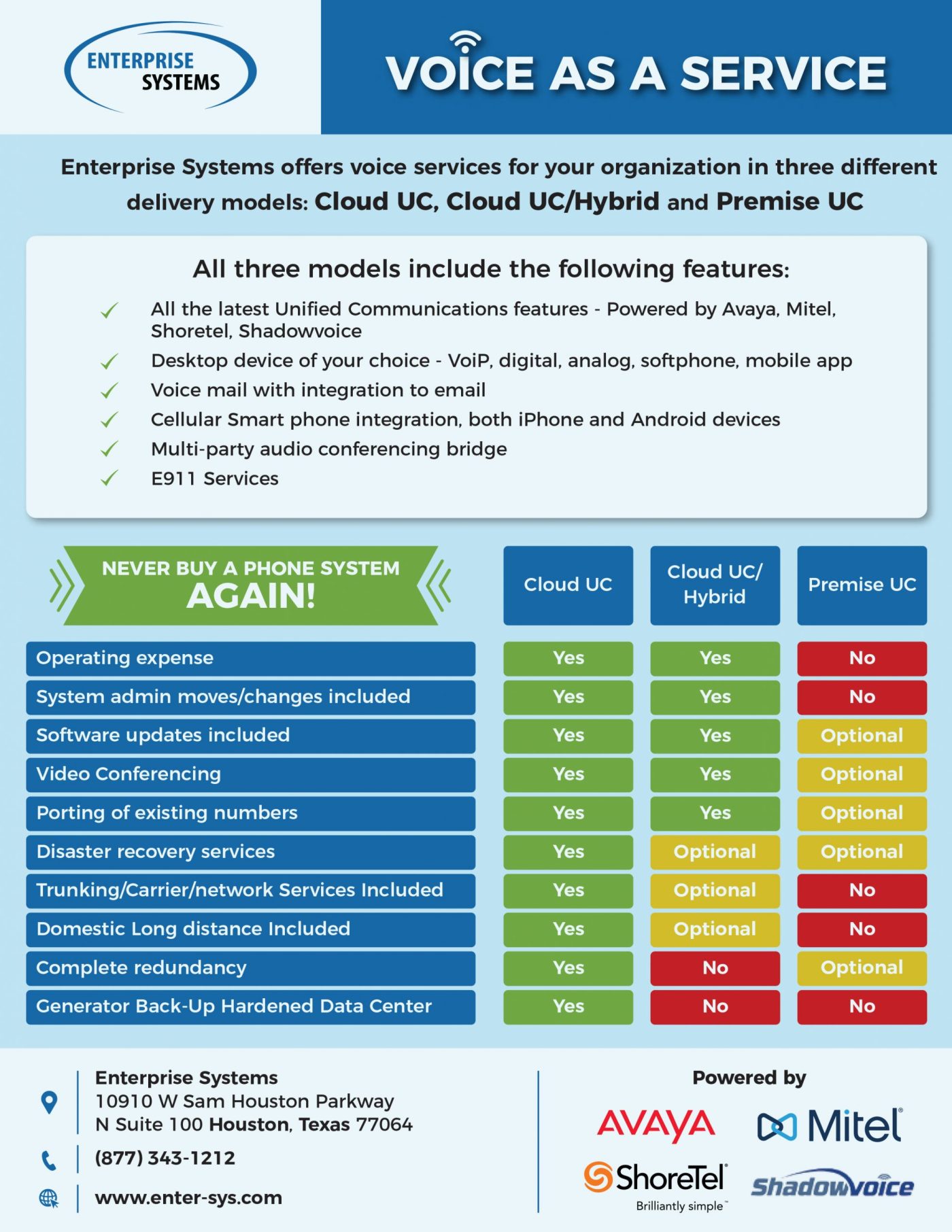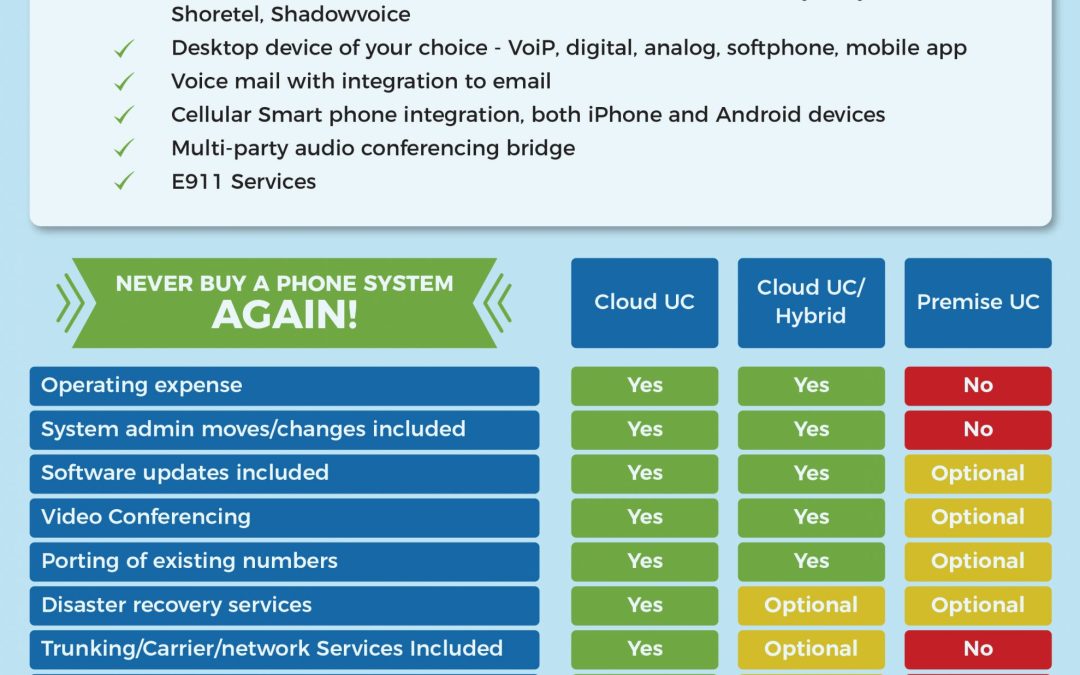
Wireless Network Solutions in Houston: Embracing the Future of Connectivity
In the world of technology that is so busy and fast, being connected is more important than when. The increasing pace at which the digital infrastructure is developing has made wireless network solutions critical to the way businesses and people run their affairs in Houston. More and more in the 21st century, the use of modern wireless technology is imperative for increasing productivity, guaranteeing sound communications, and planning for what lies ahead. This blog post examines the benefits of wireless network solutions in Houston and how they drive the future of the internet.

The Evolution of Wireless Networks in Houston
Wireless technology has evolved greatly from its small beginnings. In Houston and most other cities, wireless networks have grown from personal use systems to intricate business, industry, and public service-level systems. The necessity to have flexible, scalable and high-speed connectivity has necessitated the change from wired to wireless networks in Houston. Wireless networks today are not only faster but are also safer and more reliable than ever before, thus suitable for such a variety of uses – from home to company-wide operations.
Why Wireless Network Solutions Are Crucial for Businesses in Houston
Wireless network solutions offer several advantages for businesses in Houston. Here are some key benefits:
1. Flexibility and Mobility
In the current modern world of business, mobility is the key. The employees are no longer restricted to one desk or workstation. Wireless networks allow an individual to use the network from any part of their coverage, that is, moving while in the office, home, or elsewhere. This flexibility not only enhances productivity but also makes the work environment dynamic and agile.
2. Cost Efficiency
Constructing and sustaining a wired network can be expensive, and this is especially the case when one takes into consideration the costs of cables, installation, and maintenance. Wireless networks, on the other hand, can save these costs by a great deal. There is no need to maintain physical cables – companies are free to reduce their costs, both during the setup and operation, yet still enjoy fast and reliable connectivity.
3. Scalability
Wireless networks are easily scalable, and therefore businesses can be able to scale their network as they grow. Whether you need to increase the number of devices, increase the coverage area, or introduce new technology, wireless solutions support it without significant changes to infrastructure.
Enhancing Network Security with Wireless Solutions
One of the key issues regarding the security of wireless networks is also an important one. Considering that the data is sent via the air, the possibility of unwarranted access exists. However, advancements in technology have equipped wireless networks with more safety measures. The current wireless security protocols, such as WPA3 encryption, offer good resistance against potential threats.
Companies in Houston need to apply proper security measures. This encompasses as installation of robust encryption, multi-factor authentication and ensuring updates of firmware and software are done to prevent cyber threat attacks. It is possible to have the best of both worlds when reliable wireless solutions are combined with improved security practices within a business. Flawless connectivity and serenity of mind.
The Role of Wireless Networks in IoT (Internet of Things)
The area of the Internet of Things (IoT) is another one where wireless network have become a key player in the game. In Houston, firms are embracing IoT devices to gather data, keep track of systems, and automate things. Wireless networks are the foundation upon which this increasing trend (that is, smart building management systems to connected industrial machines) is established.
As the IoTs proliferate further, the need to have wireless networks that are able to handle massive volumes of data and at the same time to be able to deliver reliable, low-latency connections will also increase. This is especially important in such industries as manufacture, healthcare and retail, where raw data analysis should be performed instantly.
Choosing the Right Wireless Network Solution for Your Business
When selecting a wireless network solution for your business in Houston, there are several factors to consider:
1. Coverage Area
Make sure that the solution that you opt for is comprehensive in order to cover your office or business premises. The type of network that you will need will depend on your needs; you may need a network that can support large spaces or high-density places with various users.
2. Speed and Reliability
Seek a solution that provides quick speed and low latency in a way that your network will support high volumes of data and numerous devices without lags or delays.
3. Support for Future Growth
Choose a solution that not only meets your current needs but can also scale with your business as it grows. This future-proofing approach will save you money and time in the long run.
4. Customer Support and Service
The important factor when selecting a wireless network provider is dependable customer support. Make sure that the company you go for provides you with responsive support in case you get any problems with your network.
The Future of Wireless Networks in Houston
Looking ahead, wireless network solutions will continue to evolve in Houston. Following the surge of the 5G technology, businesses can look forward to even greater speed, less latency, and more reliable connections. With more industries leaning towards automation and digitization, there will be a market demand for high-performance wireless networks.
In addition, such technologies like Wi-Fi 6 are already sending ripples in the wireless industry. These are supposed to enhance speeds, make the network efficient and accommodate more connected devices. Companies that would like to stay a step ahead of the curve as Houston continues to grow and change will need to embrace this innovative technology.
Conclusion
Companies in Houston need wireless network solutions since they provide more flexibility, lower costs, and better security. Companies have to remain ahead by adopting these contemporary network solutions as technology develops. Enterprise Systems provides consistent wireless networking choices that can enable companies to expand and remain connected easily. Investing in the appropriate wireless infrastructure will help your company to increase production and prepare for the future. Switch now to enjoy the advantages of a smooth, high-speed connection.

Shortest Path Bridging: Simplifying Complex Network Topologies
In the ever-connected world, networks are an important determinant of how data is transmitted and shared. With an expansion of organizations, the expansion of network structures also takes place, which is sometimes characterized by complex topology, making it hard to handle. One of the solutions to these issues that has arisen is the Shortest Path Bridging (SPB). This technology smoothens the data movement through networks, thus enhancing communication and making it reliable.
What is Shortest Path Bridging?
Shortest Route Bridging is a networking tool meant to simplify the routing of data packets over a network. Operating on the idea of building a streamlined route for data, it guarantees the most efficient path from source to destination. In big networks where conventional routing techniques might be laborious and ineffective, SPB is very useful.
The Need for SPB
Older protocols’ limits become increasingly obvious as network needs keep rising. Traditional spanning tree protocols might cause bottlenecks and longer data travel times, which could affect performance. By permitting several active routes in the network, SPB solves these problems, hence improving bandwidth use and lowering latency.
How SPB Works
Fundamentally, SPB is based on link-state routing. By exchanging data with neighboring switches, this approach allows every switch in the network to grasp the whole topology. The switches then determine the shortest routes to every other switch. This method enables effective data transport and excellent routing.
SPB calculates the optimal path depending on the present network topology when a data packet is transmitted. Should a link break or get overcrowded, SPB can quickly change and redirect the packet along another route, hence guaranteeing the least service disturbance.
Benefits of Shortest Path Bridging
SPB’s capacity to streamline network administration is among its most important benefits. SPB allows network managers to quickly set up and control complicated topologies without requiring great manual effort. This not only saves time but also lowers the possibility of human error.
Furthermore, SPB enables thousands of switches to be connected, thereby supporting larger networks. For companies growing and needing a flexible solution that evolves with them, this scalability is crucial. SPB also improves security by separating traffic and enabling more data flow control, which is crucial in the data-sensitive world of today.

SPB vs. Traditional Protocols
The contrasts are obvious when one compares SPB to conventional networking protocols. Traditional protocols can cause bottlenecks and restrict bandwidth use by requiring one active route for data delivery. By comparison, SPB maximizes resource use and enhances general network performance by allowing several active routes.
Moreover, conventional protocols call for more complicated configuration and administration, which can result in longer setup times and higher running costs. On the other hand, SPB’s simplified method clarifies these procedures, hence enabling companies of all sizes to use them.
Real-World Applications of SPB
Applications for Shortest Path Bridging have been observed in numerous industries, along with data centres, corporate networks, and provider carriers. In statistics facilities, SPB enables faster and greener information switching that is critical for programs wanting high bandwidth and low latency.
In corporate environments, SPB guarantees smooth access to resources for workers and supports changing workloads. SPB helps service providers by increasing the dependability and speed of their products, which may result in better consumer happiness.
Challenges and Considerations
Though it has some advantages, putting SPB presents difficulties. Companies have to make sure their current system works with SPB technology. Maximizing an SPB-enabled network also depends on staff members being trained to run and maintain it.
The need for appropriate planning and design is another factor to take into account. Although SPB streamlines certain facets of network administration, a carefully considered strategy is required to maximize its potential.
Conclusion
The difficulties of contemporary network topologies are well addressed by Shortest Path Bridging. SPB improves performance and efficiency by means of routing simplification and allowing for several active routes. This technology will help companies wanting to strengthen their network capacity greatly. Enterprise Systems provides tools and advice for those wishing to use SPB to simplify their network operations. In the end, adopting SPB can produce a more robust and responsive network prepared to satisfy future needs.

Network Design Services in Houston: Crafting Reliable and Secure Networks
In the fast-changing digital world, any business is as strong as the networks around it. For small businesses as well as big organizations, businesses in Houston are coming to their senses that investment in professional network design does more than simply an upgrade of the tech world. It’s a business essential. A secure, scalable, and efficient network is the skeleton of the day-to-day operations, which makes the communication smooth, data secure, and access to applications and services smooth.
Why Smart Network Design Matters More Than Ever
The Houston business ecosystem is multiform and changing very fast. From oil and gas to healthcare, finance, and everything in between, the demand for trustworthy digital infrastructure has taken off. Epidemic-specific network design services guarantee that every business gets a system that is designed to fit their specific needs exactly, nothing more and certainly nothing less.
An effective network design will minimize downtime, reduce latency will be reduced and create a reliable foundation for future growth. It situates your current IT capabilities in the context of long-term visions that leave your business competitive in a digital marketplace that is getting more and more competitive.

Building for Scalability and Speed
Whenever a network is created with no thought to scalability, businesses tend to end up doing expensive renovations sooner than they were planning to. That is why a forward-thinking network design aims at future-proofing your infrastructure. Whether you’re adding new employees, rolling out new applications, or expanding locations, a scalable network makes growth simple and stress-free.
Faster data transmission and unbroken service are also non-negotiables. A well-settled network guarantees optimal bandwidth allocation, smooth flow of connections between departments or groups, and support to bandwidth-intensive applications such as conferencing and use of cloud-based services etc.
Security: More Than Just Firewalls
Cybersecurity threats are no longer a matter of “if” but “when.” In Houston, where businesses handle everything from sensitive healthcare records to financial data, security is paramount. Effective network design integrates advanced protection at every level, from firewalls and access controls to intrusion detection systems and secure remote access solutions.
Proactive security planning not only defends against external attacks but also protects against internal threats and human error. When properly designed, a network becomes a shield that safeguards both your data and your reputation.
Wireless Network Design: Embracing Flexibility
With remote work and wireless networking becoming the norm, wireless networking is no longer optional; it’s essential. Houston-based businesses are becoming more and more led with a wireless-first approach, but it isn’t simply a matter of sticking a few routers in. The key to effective wireless design is careful examination of the area of coverage, device density, interference and security protocols.
A wireless network that is well designed delivers seamless roaming, high speed and reliable connectivity even in heavy user landscapes or with physical obstacles. It allows your team to communicate with each other when in a meeting room or at work from home.
Integrating Cutting-Edge Technologies
Technology is moving too fast, and your networks need to follow suit. Smart network design has space for emerging technologies such as 5G, IoT (Internet of Things), cloud computing, and AI-driven analytics. With these tools at its disposal, businesses gain increased productivity, deeper insights and better user experiences.
Growth-oriented is the best network infrastructure since it grows with you. Whether what you are doing involves the addition of IoT sensors to a manufacturing line or going cloud-based, your network should be adaptable with minimal disruption but maximum value.
Local Expertise Makes the Difference
Houston-based businesses face unique infrastructure challenges from sprawling office campuses to industrial-grade data transmission needs. Partnering with a local network design expert means gaining someone who understands the city’s tech environment, regulations, and even its physical layout. That insight can make a big difference in optimizing your infrastructure for peak performance.
Minimizing Downtime, Maximizing Productivity
Due to the unplanned downtime, businesses in Houston may stand to lose thousands of dollars in Houston per hour. With that in mind, the effect on the customers’ trust and also the productivity of employees cannot be overlooked. Careful design of the network contributes to avoiding these disruptions by providing system redundancy, smart load balancing, and monitoring as preventive measures. Provided the necessary design is in place, problems can be detected and addressed before they can escalate, leaving your business running as if nothing went wrong. Quality connectivity ensures that your workforce remains diligent, your clients are pleased, and your business runs smoothly every day of day.
Conclusion
With the current world being so digital, being able to have powerful and secure networks is necessary for the running of your business successfully. A good network setup makes things flow smoothly, ensures all your data is safe, and prepares you for future expansions. Enterprise Systems provides reliable and scalable network design services for Houston at your request. Depending on new construction or an upgrade to your existing configuration, the perfect design could be just around the corner! Start your journey to a better, faster, more secure network and ensure lasting success for your business.

Data Cabling in Houston: Ensuring Efficient and Scalable Network Infrastructure
In the swiftly evolving international world of generation, having a dependable information cabling gadget is vital for businesses in Houston. Data cabling serves as the backbone of any community infrastructure, taking into consideration powerful conversation and statistics transfer. As groups grow and expand their operations, the want for a flexible and sturdy cabling device becomes more and more vital.
Understanding Data Cabling
Data cabling is the process of installing wires linking different devices inside a network so they may interact. This could cover more devices, printers, servers, and PCs. Twisted pair cables, coaxial cables, and fiber optic cables are the main varieties of data cables. Every kind is appropriate for various settings and has its own benefits.
Office environments often use twisted-pair cables. They are a common option for many companies since they help to lower electromagnetic interference. Though less frequent in current installations, coaxial cables still have certain uses and can be found in certain older systems. Fiber optic cables are increasingly preferred for their efficiency and speed since they provide high-speed data transfer over great distances.
The Role of Data Cabling in Business
There are many reasons why efficient data cabling is actually essential. First, it right away influences the speed and dependability of an agency’s community. A well-planned cabling infrastructure ensures uninterrupted and fast motion of record packets. For agencies depending on cloud services, video conferencing, and real-time information sharing, this dependability is particularly critical.
Scalability is another key component. Companies’ networking requirements evolve. A flexible cabling system guarantees that the infrastructure can fit new needs by means of simple modifications and expansions. In a city like Houston, where companies are always changing, this is particularly crucial.

Choosing the Right Cabling Solutions
Choosing data cabling services requires careful consideration of the particular requirements of the company. It is vital to deal with knowledgeable people who know the local industry. These professionals can evaluate the particular needs of every company and provide the most appropriate cabling options.
A good service provider will provide several choices so companies may select the cables that most suit their requirements. The office design, the level of data traffic, and future expansion plans are all things to take into account. This customized strategy guarantees that the cabling system satisfies the needs of the company and is efficient.
The Installation Process
Usually, data cabling installation starts with a workspace evaluation. This assessment guarantees an effective installation by helping to determine the optimal paths for cable lines. The cables will then be installed by technicians, possibly routing them through walls, ceilings, or conduits.
Testing is a vital next step after the installation. This guarantees that every link is operating correctly. Appropriate testing can find problems that could interfere with company operations first. In the long term, a careful installation and testing procedure can help to save money and time.
Maintenance and Support
Maintaining the data cabling regularly is absolutely necessary to keep the network operating. Cables can wear out or get damaged with time, which causes connectivity problems. Creating a maintenance schedule with a service provider can enable early problem detection and guarantee ongoing network dependability.
Apart from upkeep, technical assistance access is essential. Rapid reactions can reduce downtime and help to maintain business operations on course when problems occur. Knowing help is always there if required, dependable support services provide peace of mind.
Future Trends in Data Cabling
Data cabling options are changing too as technology advances. Cabling material and design innovations are producing quicker, more effective networks. Companies that keep up with these developments will be better able to change and succeed in a competitive environment.
Furthermore, cloud computing and remote work have driven a greater need for strong data cabling systems. Having a good network infrastructure gets even more important as more people work from home or across different sites. Businesses that spend money on good cabling will be better able to meet future difficulties.
Conclusion
Every business in Houston needs data cabling to develop its network foundation that supports information connectivity. The cabling infrastructure, which provides efficient data transmission, enables businesses to perform operationally. Success requires business-specific solutions provided by enterprise systems, which ensure each company gets the necessary network structure. Businesses that spend money on premium data cabling infrastructure and proper maintenance will experience stable networking capabilities and enable better preparedness for growth. A vital expenditure enables businesses to maintain operational stability while they adapt to emerging technological challenges.

Network Cabling Services in Texas: Building the Backbone of Business Connectivity
In the contemporary digital age, reliable community connectivity is important for corporations of all sizes. As agencies throughout Texas expand their operations and embrace new technologies, the significance of strong community cabling services cannot be overstated. These offerings shape the spine of business connectivity, making sure that information flows smoothly and that communication remains uninterrupted.
Understanding Network Cabling
Network cabling is the setup of actual wires linking computers, servers, and different devices inside an organization. This device is critical for allowing internet access to admission, record transfer, and conversation. Different sorts of cabling include twisted pair, coaxial, and fiber optic cables, each with their own uses and blessings.
Often seen in offices, twisted pair wires are meant to minimize electrical interference. Though still essential for some uses, older systems often use coaxial wires. Conversely, fiber optic cables are becoming more and more the norm for current network installations since they are known for their high-speed capabilities.

The Importance of Quality Cabling
There are numerous reasons for the need for correct community cabling. First, it impacts information switch speed and dependability immediately. A properly organized cabling machine ensures that staff contributors can also get entry to the statistics they require without interruption and enables them to lessen downtime. For businesses that depend plenty on cloud services, video conferencing, and real-time records analytics, this dependability is specifically critical.
Second, good cabling enables scalability. Business expansion changes their networking requirements. A flexible cabling system lets companies expand and update easily, hence allowing them to fit shifting needs. In dynamic sectors where technology changes quickly, this flexibility is especially crucial.
Choosing the Right Cabling Services
Choosing network cabling services requires companies to take many elements into account. First, cooperating with knowledgeable experts who grasp the particular requirements of the sector is crucial. This knowledge guarantees that the cabling installation satisfies present standards and is done properly.
Companies can also search for suppliers providing several cabling choices. Different settings could need various kinds of wires, and having several choices allows for customized solutions. A professional provider will evaluate the particular requirements of every company and advise on the most appropriate cabling kind and setup.
Installation Process
Usually, installing network cabling starts with a comprehensive evaluation of the site and consists of various stages. This evaluation guarantees the system is both efficient and effective by helping to determine the optimal sites for cable lines. Technicians will install the wires once the plan is set; this may mean routing them through walls, ceilings, or conduits.
A vital stage follows installation: testing. This stage guarantees proper cable operation and trouble-free data transfer. Appropriate testing enables the discovery of any possible issues before they could influence company operations.
Maintenance and Support
Maintaining a network cabling system is equally as crucial as the first installation. Routine checks can reveal wear and tear, so guaranteeing the network stays strong and dependable. Companies should work with their service provider to create a maintenance plan that could call for regular cable system inspections and repairs.
Apart from regular maintenance, access to expert assistance is essential. Quick reaction times can reduce downtime and help operations run smoothly in case of a network problem. Knowing that help is always available when required, dependable support services offer peace of mind.
The Future of Network Cabling
The field of network cabling evolves as technology advances. Faster and more efficient networks are being made possible by innovations such as sophisticated installation methods and high-speed fiber optic cables. Companies that keep up with the newest technologies and trends will be better able to develop and change.
Furthermore, the need for strong network cabling will only rise as more companies adopt cloud-based solutions and remote work. To guarantee they stay competitive in an always changing environment, businesses have to be proactive in funding their network infrastructure.
Conclusion
Network cabling services maintain essential connectivity support for Texas business operations. For daily operations alongside expansion opportunities, a dependable cabling system remains indispensable. Enterprise systems adapt to individual business requirements so organizations can build infrastructure, which leads to success. Better productivity and future advancement result from business investments in quality cabling and proper maintenance, which guarantee continuous connectivity.

Business Security Solutions in Houston: Protecting Your Enterprise Assets
Business security is more crucial than ever in the digital and linked society of today. Protecting your company assets is absolutely important for long-term success as fraudsters, physical breaches, and natural disasters pose ever more hazards. Houston, a key centre for several sectors, has particular security concerns because of its varied corporate environment spanning from energy to technology and healthcare. Ensuring the protection of data, physical assets, and the general integrity of your operations depends on business security solutions in Houston.

The Importance of Business Security
Any thriving company is built on security. Lacking a strong security system, companies expose themselves to major hazards, including financial loss, harm to their reputation, and legal fines. Maintaining a strong security posture is not only for compliance but also for Houston-based companies’ ongoing daily operations.
Security threat patterns are changing quickly. Although conventional security problems like theft and vandalism still exist, companies have to know also concentrate on safeguarding sensitive data from cyberattacks. Companies have to make sure their digital and physical security policies are current given the increase of ransomware attacks and data breaches.
Types of Business Security Solutions in Houston
1. Cybersecurity Solutions
Nowadays Houston companies must recognise the importance of strong cybersecurity because they increasingly utilise cloud-based services with digital technologies. Protecting digital assets through cybersecurity means safeguarding consumer data along with company property and corporate intellectual assets from online intrusion attempts. Companies can better protect against potential cyberattacks through established policies that include firewall technology along with encryption methods as well as multi-factor authentication combined with regular security evaluation procedures.
Ransomware—where hostile people keep a company’s data hostage until a ransom is paid—is one of the greatest challenges companies face nowadays. Strong data backup solutions must be implemented by companies if they are to be protected from this, as well as staff education on safe internet use.
2. Physical Security Systems
Your physical objects, together with facilities, equipment and human personnel, require equal levels of protection as your digital resources. The set of physical security measures includes alarm systems combined with access control systems as well as security guards who operate alongside surveillance cameras. These policies enable round-the-clock activity monitoring which supports blocking unauthorised access to protected locations.
Physical security stands as an essential measure in Houston’s industrial areas because businesses operating near major facilities must defend their assets from theft together with vandalism and all types of physical threats. The integration of access control systems is essential for operations with sensitive duties, including data centres and highly valuable storage facilities, because they enforce limitations regarding entry zones.
3. Integrated Security Systems
The integration of physical and digital security systems is becoming more and more crucial in a time of digital revolution. Integrated security systems let companies run physical and cyber security from one interface. For instance, access control systems or motion sensors could be connected to video surveillance systems to offer a real-time reaction to possible threats.
Houston companies are using these integrated security systems more and more since they provide the ease of controlling several facets of security from one central platform. These solutions guarantee that the company is constantly protected by enabling fast identification of both physical and digital security breaches.
4. Business Continuity and Disaster Recovery
Businesses have to be ready to go on in natural disasters or unanticipated events. Business continuity planning is the process of developing policies and plans to guarantee that vital activities keep running even under disturbance. This could involve off-site backups, remote working capabilities, and different communication channels.
Having a thorough disaster recovery plan is vital for Houston-based businesses, particularly those in sectors vulnerable to hurricanes, floods, or other natural disasters. These strategies guarantee staff members may carry on their work in unfavourable circumstances and secure physical assets as well as data.
5. Employee Training and Awareness
Ensuring a body of workers’ contributors are nicely versed in excellent protection practices is one of the most vital additives of agency protection. The first line of defence against several threats—inclusive of phishing tries, records breaches, and physical protection breaches—is a well-knowledgeable group of workers.
Offering frequent schooling courses for personnel participants on topics consisting of identifying cyber threats, steady information handling methods, and reacting to protection events enables Houston businesses to improve their protection. Companies can decrease the possibility of accidental or planned safety breaches by promoting a lifestyle of protection focus.
The Role of Technology in Business Security
Modern enterprise security is greatly influenced by technology. Businesses in Houston are using cutting-edge technology such as artificial intelligence (AI), machine learning, and automation to improve their security policies. AI-driven security systems can identify anomalous behaviour patterns, alert possible risks in real-time, and react automatically to particular events.
Automation technologies can also simplify access control, monitoring, and incident reporting, hence enabling security professionals to concentrate on more important activities. Technology will be more and more vital in adapting and reacting to new issues as security threats change.
- Business Security Solutions Houston and Charlotte
Protect your business security before it is too late
Is your business prone to security threats? Are your physical touch-points secure and safe? Are these questions bothering you? Enterprise Systems offers a wide range of Commercial Security and Video Surveillance system in Houston and Charlotte to protect your business identity and resolve your worries.
We offer card access control system and video management software to monitor and tackle any security breach efficiently.
Benefits of Business Surveillance System offered by Enterprise Systems in Houston
- Real-time HD video footage with recording option
- Mobile friendly to monitor security on-the-go
- Suitable for multiple industries (Retail, Healthcare, Education etc)
- Customized Reports
- Set Custom rules to restrict access levels
Our dedicated team of technical and customer support officers will ensure to provide seamless integration of high quality and robust Business Security Solutions in Houston with low-cost maintenance services.
Hire Enterprise Systems today and protect your business identity with reliable Video Surveillance system in Houston and Charlotte!
Choosing the Right Security Solutions for Your Business
Choosing corporate security solutions in Houston requires a careful evaluation of your company’s particular requirements. Every company is unique; the security issues a digital startup face will be different from those of a manufacturing firm. Working with a security provider that knows your company processes and can customise solutions to fit your particular requirements is really vital.
The correct security solutions should offer thorough defence against both digital and physical threats. They should also be flexible enough to fit evolving security needs and scalable to expand with your company. Working with reliable security solutions helps Houston companies guarantee their assets are safe while they concentrate on development and creativity.
Conclusion
For companies in Houston, safeguarding enterprise assets is a continuous and changing difficulty. Long-term success depends on security solutions, whether they be protecting sensitive data from cyberattacks, securing physical premises with sophisticated surveillance systems, or guaranteeing business continuity in crisis periods. Enterprise systems provide several services that enable companies to safeguard their digital and physical assets. These tools enable companies to be proactive against possible risks and offer the confidence required to concentrate on expansion and creativity. Businesses in Houston may boldly negotiate the complexity of the modern corporate scene with the correct security policies in place.

Nortel Systems in Houston: Legacy Support and Integration Techniques
Once a major force in the telecom sector, Nortel Networks offered companies all around a broad spectrum of solutions, including here in Houston. Many companies still depend on Nortel technology for their everyday communications even though Nortel went out of business in 2009. Still in use today across several sectors in Houston, these systems include items such as Nortel’s Meridian and Succession platforms. Legacy support and integration of these older systems with contemporary technology have become crucial as businesses seek to keep and grow their operations.

The Continued Use of Nortel Systems in Houston
Many companies in Houston still run on Nortel’s communication systems even though its services have been discontinued. Due to its dependability and scalability, Nortel’s voice and data systems—especially their PBX (Private Branch Exchange) solutions—became essential components of corporate infrastructures. These technologies let businesses handle consumer interactions, call routing, and internal communications efficiently.
For companies that spent much on Nortel technology, moving to more modern systems could appear expensive and difficult. Replacing Nortel systems with totally new solutions could be a time-consuming procedure, so many businesses still depend on them. These systems also still satisfy the requirements of many companies, particularly those in sectors where high uptime and security are very important.
Legacy Support for Nortel Systems
Maintaining these legacy platforms is essential as companies in Houston keep using Nortel systems. Nortel’s demise has led third-party service providers to provide legacy support, therefore guaranteeing the security and functionality of these systems. Legacy support consists of replacing defective hardware parts, running software upgrades, and diagnosing problems.
Nortel’s conventional PBX systems are more complicated than current cloud-based systems; hence, businesses require specialized knowledge to handle any technical problems. Providers of Nortel system support in Houston are experienced in managing the particular needs of these older systems. These companies enable companies to make sure their communication systems stay running without expensive updates required.
Ensuring compatibility with new technology is one important component of legacy support. It’s crucial to ensure that older Nortel systems can still interface smoothly with contemporary technologies—including customer relationship management (CRM) software, email systems, and cloud platforms—as businesses adopt modern software solutions.
Integration Techniques for Modernizing Legacy Systems
Though keeping old Nortel systems is crucial, Houston companies also look for means to combine older systems with more recent technology. Integration lets companies take advantage of modern solutions’ benefits while also enabling them to extend the life of their current systems. For instance, integrating Nortel systems with cloud-based communication platforms is increasingly usual.
Using hybrid systems—which mix the best qualities of both conventional on-premise solutions and cloud technologies—is one efficient integration strategy. In such arrangements, companies can use their Nortel hardware for phone communications while also using cloud solutions for messaging, video conferencing, and other services. This kind of integration lets you enhance flexibility, scalability, and production without totally replacing legacy systems.
Adding session border controllers (SBCs) or media gateways between Nortel equipment and current cloud systems is another common integration technique. These gadgets facilitate seamless connection between old and new systems. Using SBCs or media gateways, organizations may guarantee that their modern Nortel systems engage well with present-day software and offerings, like VoIP (Voice over Internet Protocol) and unified communications.
Overcoming the Challenges of Legacy Systems
Sourcing new components becomes increasingly more tough for agencies coping with legacy structures, which is considered one of their key barriers. Finding original components and competent professionals is more difficult as Nortel equipment ages. Should a vital component break, this could cause downtime. Many third-party suppliers in Houston, therefore, are lucky since they specialize in finding and restoring older parts, so guaranteeing that companies can keep running.
Outdated systems present another difficulty in possible security concerns. Often lacking the security elements of contemporary platforms, legacy systems are open to hackers. Companies have to make sure their Nortel systems are routinely updated with the newest security patches; otherwise, they might have to install more security measures to safeguard important information.
Many Houston companies still depend on Nortel systems despite these obstacles, as they are known and dependable. Working with knowledgeable third-party suppliers helps businesses keep their current systems while handling security and compatibility issues with modern technology.
Future of Nortel Systems in Houston
Though Nortel itself is gone, several Houston companies carry on its legacy in telecom solutions. Companies that depend on Nortel systems will have to change as technology develops. Companies will still need knowledge in managing and optimizing these older systems, whether it be preserving legacy systems, incorporating new technology, or moving to a completely modern communication platform.
Companies in Houston will probably want to progressively replace their outdated systems going forward as part of their more general digital transformation plans. For those who still depend on Nortel equipment, legacy maintenance and integration strategies are still crucial to maintaining the effective operation of their communication systems.
Conclusion
Though the firm has been out of operation for years, Nortel systems still significantly influence many Houston companies. Businesses may guarantee that existing Nortel systems still satisfy their communication requirements by means of continuous legacy support and creative integration strategies. For businesses that want to assist and update their current Nortel infrastructure, Enterprise Systems provide several options. Expert services help companies to keep their systems running smoothly whether they are maintaining legacy equipment, integrating with modern platforms, or guaranteeing security. For many companies, these options offer a reasonable and sensible approach to negotiating the difficulties of using older technology while also gaining from the benefits of new communication tools.

Houston’s Enterprise Telecom Services: Navigating the Future of Connectivity
Businesses in Houston are depending more and more on sophisticated telecom services to be competitive in a fast-changing digital environment. The need for enterprise telecom services has become essential for organizational success because technological developments have transformed business communication dynamics. These services improve communication system efficiency as well as flexibility and scalability, which enables companies to stay in the lead of fast-moving industries.

What Are Enterprise Telecom Services?
Enterprise telecom offerings are a broad spectrum of conversation gear meant to satisfy the unique requirements of groups. These offerings range from traditional landline and cell phone offerings to more contemporary alternatives, including Voice over Internet Protocol (VoIP), cloud-based total communications, and unified communications systems. They are meant to beautify the interactions companies have with their employees and clients.
Given Houston’s reputation for varied businesses and fast-expanding technology sector, these services are absolutely vital for preserving seamless, continuous connection. Telecom services form the backbone for much of the infrastructure supporting digital transformation as more companies adopt it.
The Rise of Cloud-Based Telecom Solutions
Cloud technology has changed the telecom scene in recent years. Houston companies are progressively using cloud-based systems that provide smooth communication across many devices and platforms. Cloud telecom services have several advantages, including lower running expenses, better scalability, and simpler connections with other corporate systems.
Cloud offerings provide agencies the freedom to manipulate their communications from nearly any vicinity. Without any interruption in their capability to make calls, ship messages, or participate in video meetings, personnel may work from the workplace, domestically, or on the pass. As groups undertake remote work and hybrid working techniques, which have become the standard in many sectors, this pliability has grown increasingly more important.
VoIP and Unified Communications
Another critical factor of corporate telecom services is voice over Internet Protocol (VoIP). Unlike conventional smartphone structures, VoIP lets businesses use the net to make and receive calls in preference to depending on landlines. Among other things, this era now not only saves money but also gives advanced competencies like voicemail-to-email, video conferencing, and speak-to-forwarding.
By integrating audio, video, messaging, and collaboration skills into one unified platform, unified communications (UC) push VoIP one step in addition. UC allows Houston groups to simplify their conversation structures and growth output. All without converting between numerous platforms, employees may additionally use a single interface to ship emails, take part in video meetings, talk with colleagues, and make voice conversations.
The Importance of Scalability and Flexibility
When evaluating telecom services, scalability is a key consideration for Houston companies. Companies’ communication requirements could change as they develop and change. Scalable telecom solutions let companies change their infrastructure to fit more staff, broaden their offerings, or include more tools as needed.
Modern communication services are also quite flexible. Whether that means more communication channels, new cooperation tools, or expansion into other areas, companies want solutions that fit their evolving needs. Flexible telecom services may guarantee that a firm’s communication system stays effective and functional, no matter how the organization changes.
Enhanced Security and Reliability
Security is one of the top issues for companies using telecom services. Businesses in Houston have to make sure their communication systems are safe given increasing cyber threats and data breaches. Enterprise telecom services usually provide sophisticated security measures and encryption to safeguard private corporate data. These qualities help to guarantee that video conferences, messages, and calls stay private and safe.
Equally significant is dependability. Especially in urgent circumstances, Houston companies want telecom solutions they can count on for continuous communication. Many enterprise telecom services include disaster recovery choices and built-in failover features, so if one system fails, another will take over without major disturbance.
The Future of Telecom Services in Houston
The future of telecom services in Houston is set for more innovation as technology advances. The telecom scene will be shaped more and more by new technologies, including 5G and the Internet of Things (IoT). These technologies will give companies quicker, more efficient communication options, hence allowing them to interact with clients and consumers in novel ways.
For instance, 5G networks will offer faster speeds and lower latency, consequently allowing corporations to beautify their cellular communications and access actual-time data. IoT devices also can connect with telecom structures to offer businesses insightful analysis of their operations, therefore supporting decision-making and enhancing purchaser stories.
Ongoing integration of artificial intelligence (AI) into telecom services will also bring about new developments. Enterprise telecom systems are seeing a growing prevalence of AI-powered chatbots, virtual assistants, and automated customer care solutions. For companies in Houston, these tools can improve the general client experience, lower reaction times, and help them provide better customer service.
Conclusion
For companies trying to flourish in an ever-digital society, Houston’s enterprise telecom services are essential. Growing dependence on cloud technology, VoIP, unified communications, and scalable solutions helps companies remain connected, boost production, and provide better customer experiences. These services will be more important in forming the future of communication for Houston-based businesses as technology develops. Enterprise systems give companies the tools they need to negotiate this digital transition and set themselves up for long-term success. Houston companies are well-equipped to face the difficulties of the competitive market of today and welcome the possibilities of tomorrow with safe, dependable, and flexible telecom services.

Avaya Cloud Office: Revolutionizing Business Communication in Houston
Effective contact is at the core of any successful company in the fast-paced world of today. For seamless operations and expansion, being in touch with consumers, clients, and workers is vital, whether the company is a small startup or a big business. Cloud-based communication systems fit here. Avaya Cloud Office is one such platform changing corporate communication in Houston. This approach is opening doors for companies to simplify their communication systems, increase efficiency, and provide outstanding consumer experiences.

What is Avaya Cloud Office?
Designed to combine audio, video, messaging, and collaboration technologies into one smooth solution, Avaya Cloud Office is a unified communication platform. The solution gives companies the freedom to control their communication requirements from any location, at any time. All available via desktops, mobile devices, or web browsers, it provides cloud-based capabilities such as team messaging, virtual meetings, and call forwarding.
This connection aims to offer streamlined person understanding, allowing Houston businesses to maintain all verbal exchange channels in a single location, lowering the want for several structures, and boosting standard efficiency. Avaya Cloud Office guarantees that personnel members continue to be connected and productive if they’re running remotely, inside the office, or on the pass.
Key Features of Avaya Cloud Office
Video and Voice Communication
Fundamentally, Avaya Cloud Office provides video and phone calling options. From a fast conference call to a video meeting with distant customers, companies may quickly interact without using various apps or devices. The system enables crystal-clear phone calls and HD video, so communication is quick and easy.
Unified Messaging
Avaya Cloud Office lets companies handle all their messaging from a single location. Everything can be centralized in one interface, whether it’s direct team chat, email, or SMS. This eliminates the need to hop between systems and waste time attempting to catch up on talks dispersed across several tools.
Collaboration Tools
Avaya Cloud Office’s set of tools—including team chat, file sharing, and task management—allows companies to work together seamlessly. Its core feature for contemporary corporate cooperation is that teams may collaborate in real time, exchange papers, and monitor tasks all from within the platform.
Mobile Flexibility
Employees are usually on the go in the modern office. Avaya Cloud Office lets Houston companies stay connected wherever they are with mobile apps for both Android and iOS. From their tablets or cellphones, employees may read their messages, participate in video conferences, and make and receive calls.
Scalability
Avaya Cloud Office’s scalability is among its most notable qualities. Business expansion will also affect their communication requirements. The platform is meant to grow with the business, hence Houston companies may add more users, enhance functionality, or include more tools as required. Avaya Cloud Office may be customized to match your needs, whether you run a small company or a big corporation.
Security and Reliability
Any company, particularly in terms of communication, finds security to be a top issue. Avaya Cloud Office protects sensitive data using cutting-edge encryption and security techniques. Whether it’s internal messages or consumer contacts, companies can rely on the platform to keep their communications safe. Moreover, the platform’s cloud-based architecture guarantees great availability and little downtime.
Why Avaya Cloud Office is Ideal for Businesses in Houston
Known for its vibrant economic scene, Houston is home to many sectors ranging from energy and healthcare to tech startups and retail. The demand for contemporary, dependable communication systems is clearer as Houston companies keep growing. Avaya Cloud Office has a number of benefits that make it ideal for companies in the region.
Remote Work-Friendly
One of the most important changes in the modern workforce has been the growth of remote employment. Avaya Cloud Office lets Houston companies easily run remote teams. Without being limited by location, employees can remain linked to their coworkers, participate in meetings, and work together in real time. In a varied city like Houston, where staff members could be working from various areas of the city or perhaps from other nations, this is very useful.
Cost-Effective
With prices for equipment, installation, and upkeep, conventional phone systems can be costly to operate. Avaya Cloud Office helps Houston companies to lower these overhead expenses. The platform being cloud-based eliminates the need for on-site hardware or large infrastructure, which could save companies of all sizes greatly.
Enhanced Customer Experience
Especially in sectors like healthcare, retail, and professional services, many Houston companies are driven by customer service. By providing dependable and quick communication solutions, Avaya Cloud Office helps to enhance the client experience. To guarantee consumers receive the help they want fast and effectively, companies can establish interactive voice response (IVR) systems, phone queues, and auto-attendants. The outcome is increased consumer happiness and loyalty.

Seamless Integration with Other Tools
Many companies struggle to combine new technologies with current systems. Avaya Cloud Office simplifies this by providing connections to well-known tools such as Google Workspace, Salesforce, and Microsoft Teams. Adopting the platform guarantees companies won’t have to disturb their present processes.
Disaster Recovery and Business Continuity
During unexpected events or natural catastrophes, companies in Houston want consistent solutions to carry on with their activities. Avaya Cloud Office’s cloud-based architecture guarantees that even during interruptions, communication systems are up and functioning. Automatic backups and remote access features let companies preserve continuity and open lines of communication no matter what occurs.
Conclusion
Business communication in Houston has been revolutionized by Avaya Cloud Office. Its sophisticated features, adaptability, and scalability let local companies now control their communication requirements more effectively and affordably. The platform provides all a company needs to remain connected and efficient, whether by voice calls, video conferences, or team cooperation. Enterprise Systems give Houston companies the opportunity to use this strong communication tool, enabling them to strengthen their operations and customer interactions. Solutions like Avaya Cloud Office are developing greater essential for fulfillment as companies include digital transformation. Its easy integration and capability to suit various company goals make it a need-to-have device for agencies aiming to prevail within the cutting-edge workplace.

The Evolution of Enterprise Systems: From Legacy to Cloud-Based Solutions
Enterprise systems have operated as business foundations without publicity for many decades. Business organizations utilize supply chain operations and financial record automation through these systems to maintain efficient operations. Flexible cloud-based ecosystems now replace original technology platforms that operate on-site systems. The change represents more than basic technological improvement. The current essential transformation in business operations enables organizations to scale and innovate for digital market success in competitive markets.

Understanding Legacy Systems: Useful but Outdated
Legacy enterprise systems were groundbreaking in their time. Built to run on company-owned servers and maintained by internal IT teams, they gave businesses control over their operations and data. But over time, the cracks began to show. When using such systems, they demanded expensive hardware maintenance costs along with reduced adaptability in tool integration and scalability processes. The technological requirements of modern businesses exceeded legacy systems’ capabilities which turned them into an impediment more than a helpful element. Current rapid business demands make it unacceptable to maintain either slow updating capabilities or limited application mobility.
Cloud-Based Solutions: The New Standard
The move to cloud-based enterprise systems is a response to the limitations of legacy platforms. Unlike traditional systems, cloud solutions offer flexibility, mobility, and scalability all essential qualities for modern business needs. Organizations can access their systems from anywhere, at any time, which supports remote work and global collaboration. Information updates operate automatically, while third-party program integration becomes increasingly simple through modern technology. Businesses nowadays avoid investing in large hardware equipment because they no longer need to keep operating expensive data server facilities. Instead, they pay for what they use and scale their systems as needed. This agility enables faster decision-making and greater innovation.
The Real Advantages of Going Cloud
Cloud-based enterprise systems are built for performance. They adapt to growing business needs without the need for physical upgrades. They also reduce operating costs by eliminating expensive infrastructure and decreasing downtime through better reliability. Real-time sharing of data becomes possible across teams situated anywhere, whether inside or outside the business premises. Security concerns surrounding cloud technology transformed into strengths because major cloud providers now implement secure encryption protocols and maintain regular backup routines with specialized security teams. Cloud systems enable fast business recovery from unexpected interruptions and service interruptions through their capabilities to support continuity operations.
Why Migration Still Requires Caution
Moving from a legacy system toward cloud-based operation presents multiple benefits, but the transition process remains challenging. The transition requires moving enormous amounts of data while changing application setups as well as requiring workflow reorganization. Staff requires training to accept the new environment and integration with current systems demands complex work. The transition requires attention to compliance standards, especially when companies handle sensitive data that falls under strict regulatory systems. Successful data migration requires careful planning since hasty or ineffectively managed transitions might cause service disruptions along with data exposure incidents. Therefore, a strategic migration plan is vital.
Building a Strategy for Cloud Success
A business needs complete preparation in order to achieve migration success. Corporate entities should conduct complete system assessments before shifting their assets into the cloud environment. A successful migration requires joining all applicable departments before the process starts to obtain alignment and combat possible resistance. Gradual implementation of the migration process helps businesses avoid risks while continuing standard operational activities. Training is equally important, helping employees adapt to new interfaces and workflows. Even after migration, continuous monitoring and updates ensure systems remain secure, efficient, and aligned with business goals.

Future Trends: What’s Next for Enterprise Systems?
As technology keeps advancing, enterprise systems will continue to evolve. Artificial intelligence (AI), machine learning, and automation are already being integrated into cloud platforms to improve decision-making and reduce manual tasks. Businesses can expect systems that not only store and process data but also analyze it in real-time to offer smart insights. Edge computing will enable enterprise systems to quickly process information at its collection point which improves speed and response. The upcoming generation of enterprise solutions will become more intelligent through these emerging trends.
Conclusion
The modern business world requires flexible management systems that run fast and provide simplicity during operations. Cloud-based solutions provide businesses with better speed and flexibility along with accelerated growth potential. Enterprise Systems provides both essential tools and professional support to assist companies through their transition to cloud-based programs successfully. Companies that choose cloud solutions obtain financial cost savings and enhanced security while gaining access to modern technological advancements. Companies should embrace cloud computing solutions because they represent their future business operational landscape. Businesses can confidently proceed in this direction with clear objectives now. Start your path right now to maintain your ascending position.
